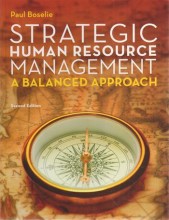Organizations in action - Boek Thompson - Organizations in Action - Rationality in organizations: shielding primary processes
4 important questions on Organizations in action - Boek Thompson - Organizations in Action - Rationality in organizations: shielding primary processes
Thompson discussed two forms of rationality: technical rationality and organizational rationality. What is the difference between those two?
However, you cannot seal your system entirely from the environment, and some environmental influences cannot be solved by the technical core (primary process). Therefore we need organizational rationality.
Organizational rationality deals with uncertainty caused by environmental effects on acquiring inputs and delivering outputs. This is about aligning the input and output in such a way they can cope with uncertainty.
What are the three types of primary processes as discussed by Thompson?
2. Mediating; standardization of products for as many customer groups as possible.
3. Intensive; custom combinations of activities and capacities. Feedback is needed.
What determines predictability in a intensive technological core?
- Higher grades + faster learning
- Never study anything twice
- 100% sure, 100% understanding
What are the four ways of organizational rationality: aligning input and output to reduce uncertainty?
2. Smoothing; manipulating demand; when to buy.
3. Anticipation; forecasting demand.
4. Rationing; space in primary process in terms of resources (capacities and time) to deal with unexpected events.
The question on the page originate from the summary of the following study material:
- A unique study and practice tool
- Never study anything twice again
- Get the grades you hope for
- 100% sure, 100% understanding
































